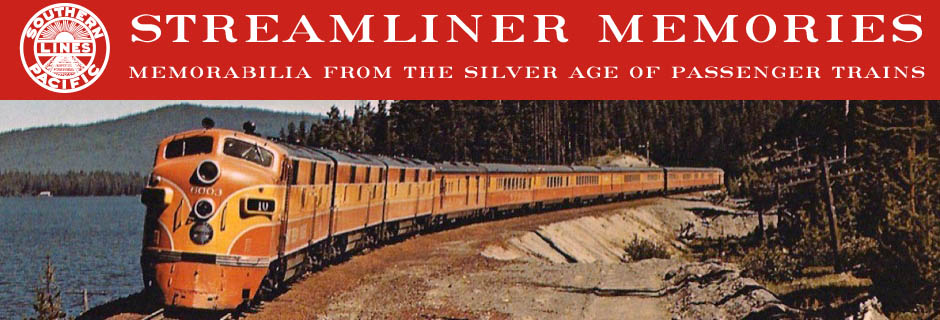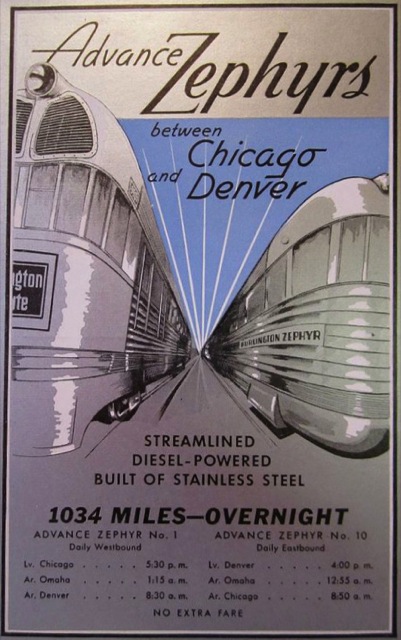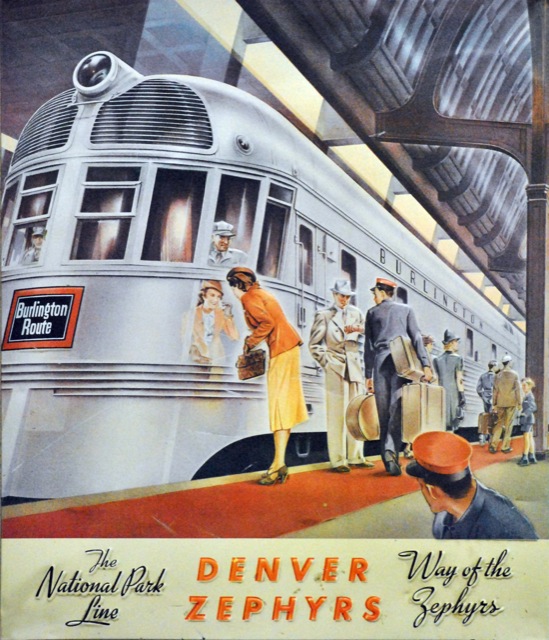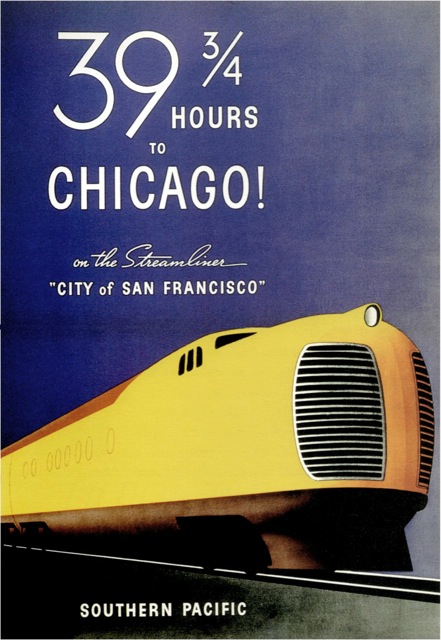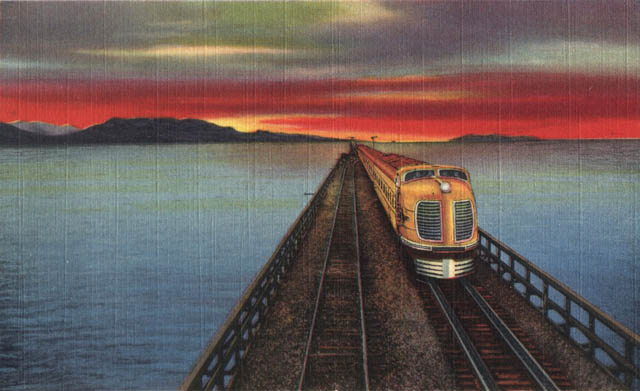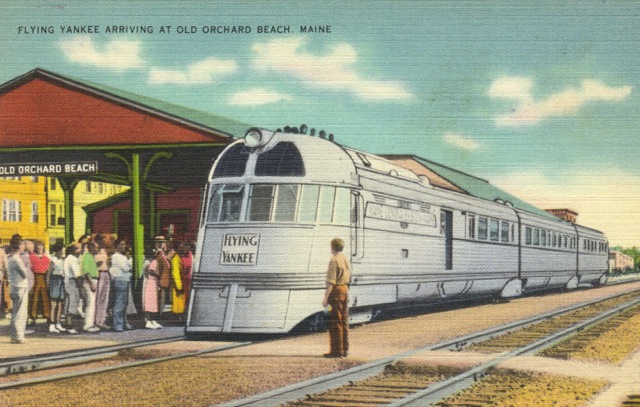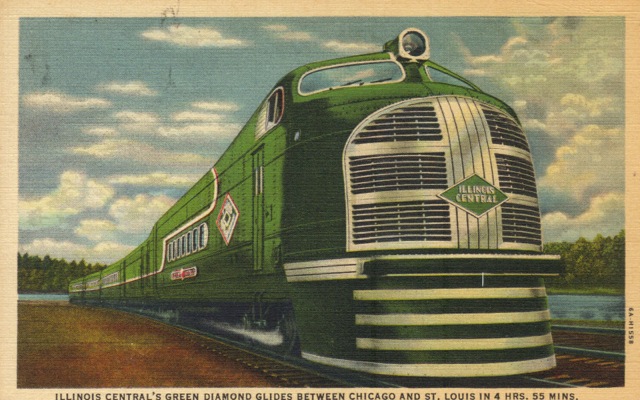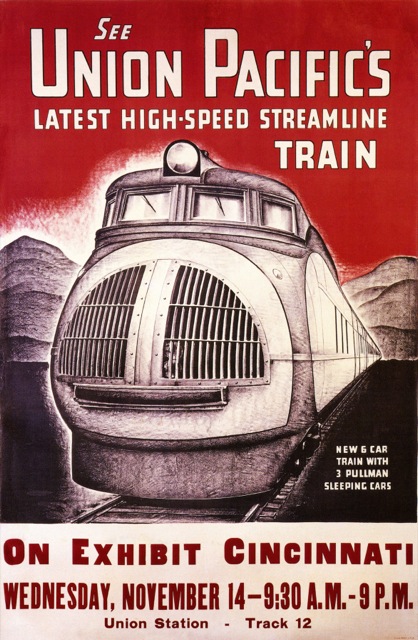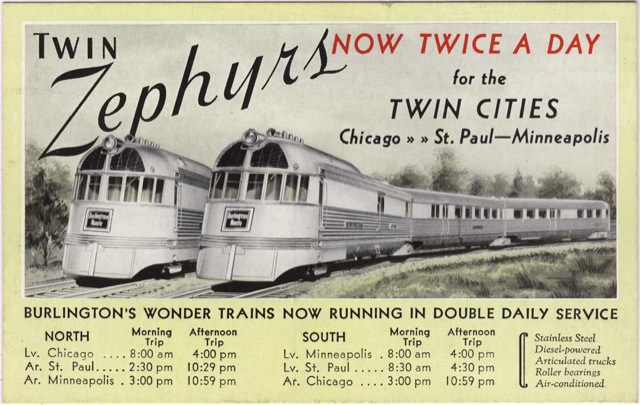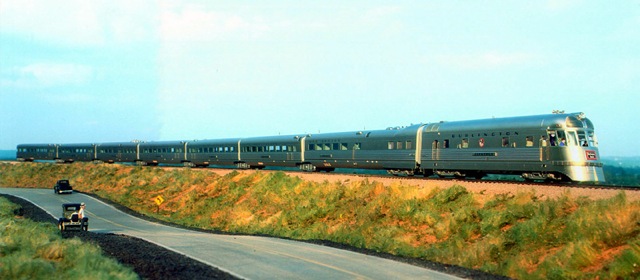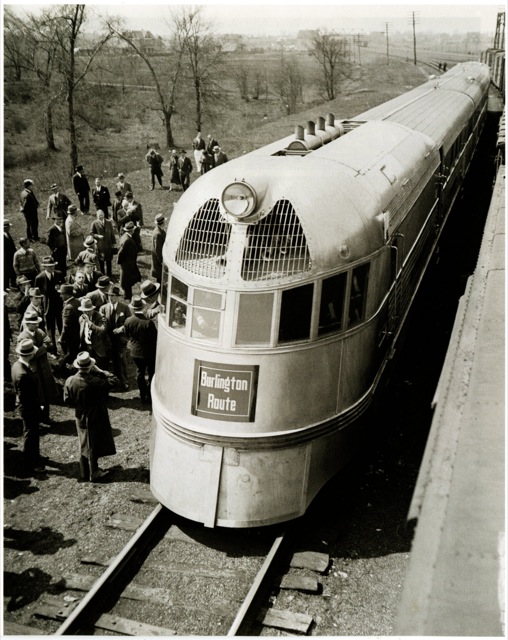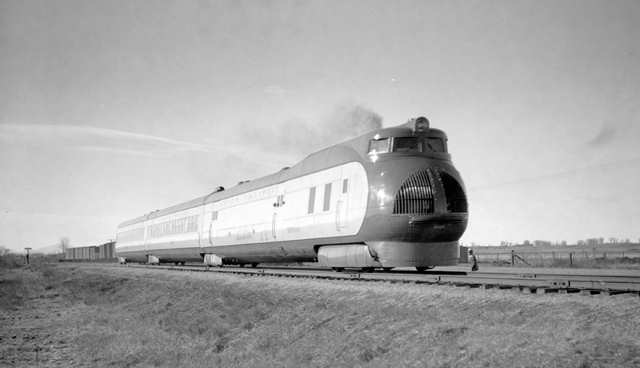When, in June 1936, the Union Pacific put the M-10005 and M-10006 in daily service between Chicago and Denver, the Burlington’s own sleeping-car equipped Denver Zephyr was still five months away. To steal the Union Pacific’s thunder (and protect its mail contract), Burlington pulled the original Zephyr and the Mark Twain Zephyr from their assigned routes and used them as Advanced Denver Zephyrs, starting 18 days before the City of Denver entered service.
The real Denver Zephyrs, Zephyrs 9906 and 9907, began working in November. Though their numbers were higher than the 1936 Twin Cities Zephyrs (9904 and 9905), the streamlined Denver Zephyrs actually entered service first. The Denver Zephyrs were also much longer trains, with ten (and later twelve) cars pulled by two locomotives.
Poster advertising the Denver Zephyr emphasizes the mirror-like finish of stainless steel. Actually, the woman’s face would be highly distorted in the curved front of the locomotive. Click to download a 4.7-MB version of this poster.
